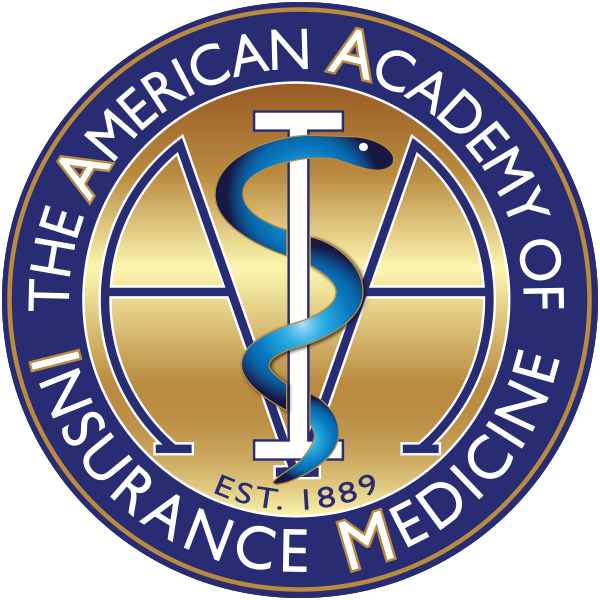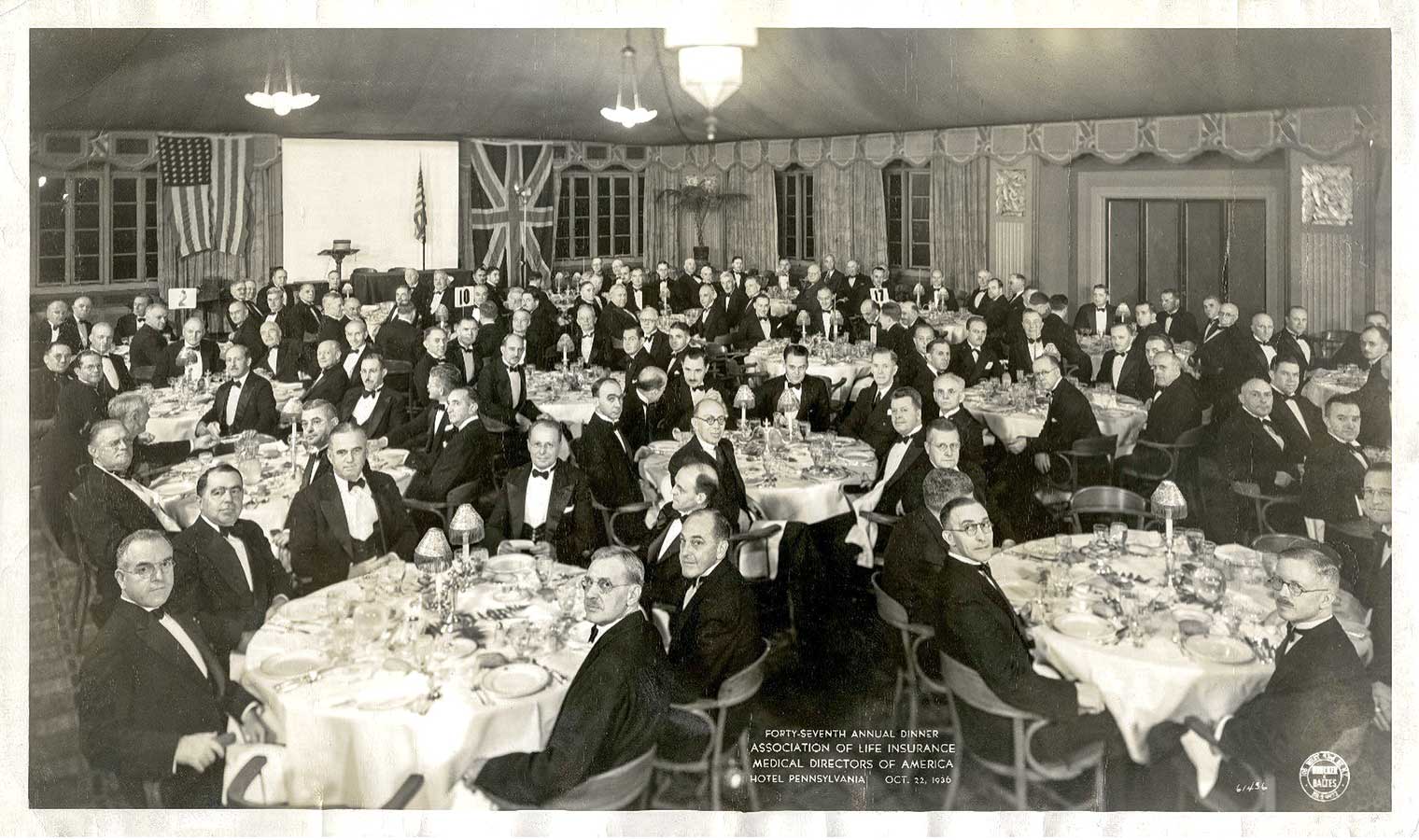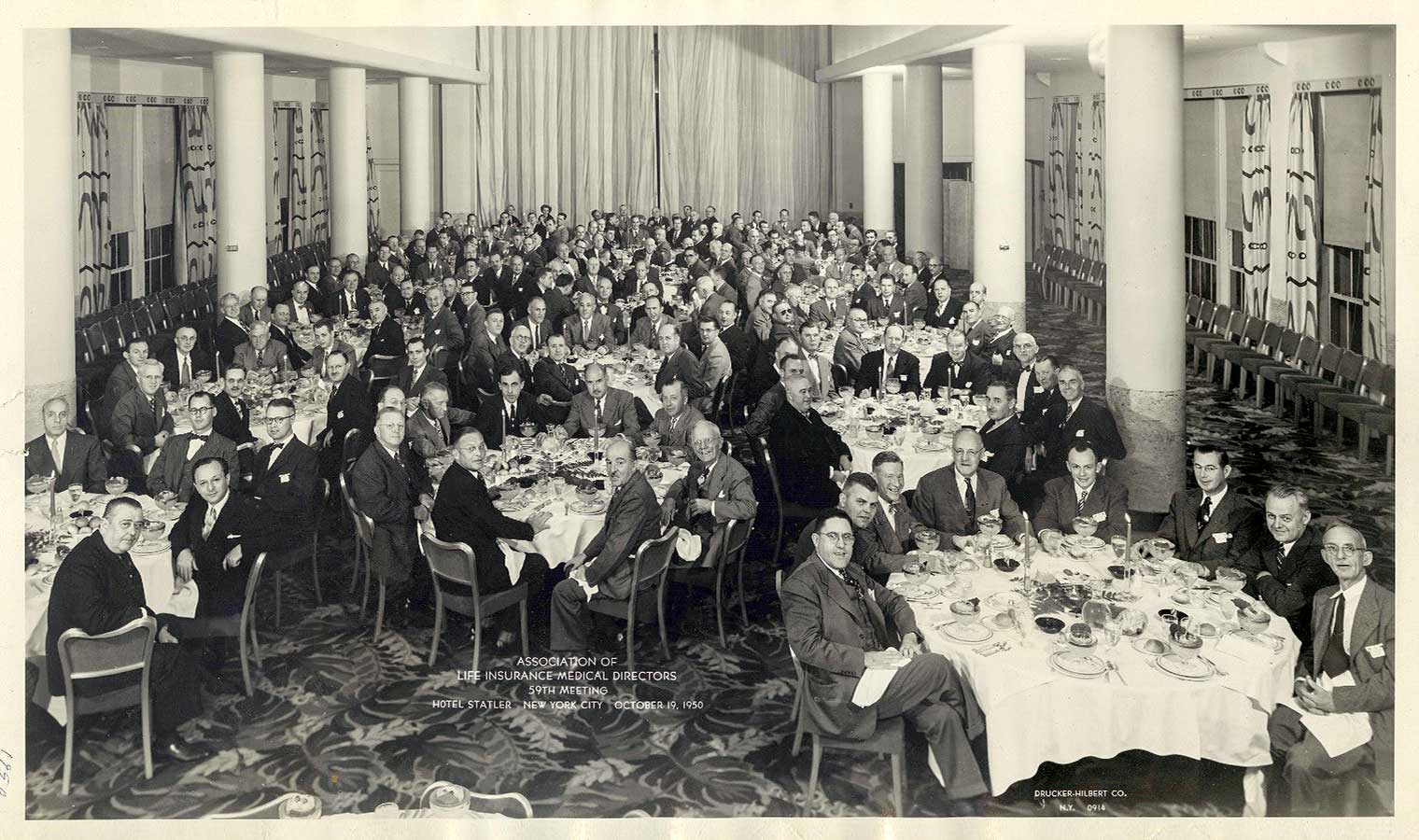Over 100 Years of Legacy & Growth
In 1889, 34 physicians from 27 insurance companies formed the Association of Life Insurance Medical Directors of America (ALIMDA) in New York. By 1990 there were 606 medical director members from 363 insurance companies. Originally it was an organization for medical directors in the United States and Canada, but members from other countries were welcomed as the 20th century progressed. ALIMDA addressed all professional medical interests relating to risk selection including mortality and morbidity studies, education, and professional and public relations. In 1991, the name was changed to the American Academy of Insurance Medicine (AAIM) to emphasize the educational mission and to remove ‘life’ from the title to reflect the organization’s role in disability, health, long-term care and other more recently developed types of insurance.
In the 19th century, physicians conducted medical examinations to ensure that life insurance was offered only to those who seemed to be healthy. The existence of a professional organization promoted development of consistency and fairness in the risk selection process. ALIMDA also encouraged application of medico-actuarial methodology to make underwriting more scientific. By the end of the century, early life insurance research had demonstrated the mortality implications of the results of routine urinalysis for protein and sugar. This proved to be a valuable contribution to both insurance and clinical medicine.
Throughout the past century, medico-actuarial studies were conducted by medical directors and actuaries within companies and with multi-company data in conjunction with actuarial associations.
Notable contributions have included the Build and Blood Pressure Study published intermittently from 1925 through 1979. In the 1950s, these studies were the first to show conclusively that elevated blood pressure is associated with increased mortality.
Insurance for individuals with medical impairments was made possible by a numerical rating system devised in 1919. This substandard risk rating system has since made life insurance widely available to many people with various health impairments.
From the beginning, educational needs of insurance medical directors have been addressed at annual meetings. Guest experts from academic medicine and from the insurance industry discuss advances in medicine and their application to the risk assessment process. In the 1960s, ALIMDA also created the Board of Insurance Medicine (BIM) that has established criteria for diplomat recognition. The BIM developed an intensive and comprehensive triennial course in insurance medicine that continues today as a key educational source.
The 1960s saw the birth of the Journal of Insurance Medicine. This respected journal is published quarterly and focuses on mortality and morbidity analysis of medical and insurance research.
AAIM maintains the commitment to education and research started by ALIMDA over a century ago. It has created associate and affiliate memberships for those involved with insurance medicine who are not employed as medical directors of insurance companies. AAIM also addresses the many professional and public relations interests of the insurance medical community, including ongoing representation in the American Medical Association.
The Records of the American Academy of Insurance Medicine are housed in the Davis Library at St. John’s University in New York, NY. Click here for a list of contents or contact the AAIM Secretariat for more information.


